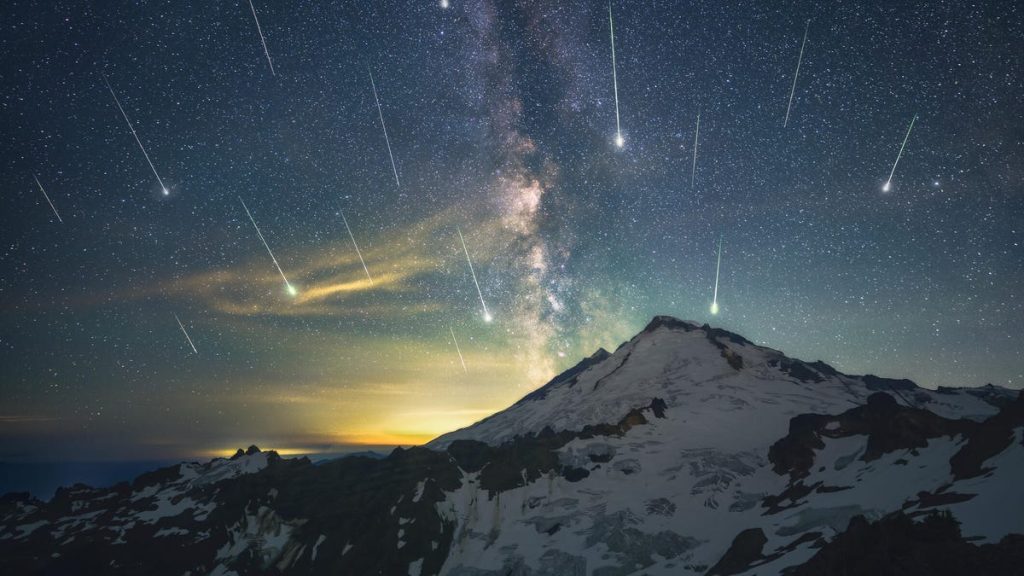The Eta Aquarid meteor shower is set to peak this weekend, offering a breathtaking sight for those willing to wake up early on Sunday morning. This annual event occurs between April 15 and May 27, with peak activity in early May. The meteors are leftover comet particles shed by Halley’s Comet as it passes through the inner solar system. They are known for their speed, with the potential for meteors to reach speeds of up to 148,000 miles per minute as they enter the Earth’s atmosphere. These fast-moving meteors often leave behind glowing streaks of light known as “trains”.
To make the most of the Eta Aquarid meteor shower, location is key. Those in the southern hemisphere will have a better view, but even those north of the equator can still see a decent number of meteors. The best time to view the meteor shower is in the predawn hours of Sunday morning when the sky is darkest. The moon will be only 14% full that night, reducing the interference of its light on viewing. It is important to find a location away from city lights to reduce light pollution and improve visibility.
Viewers should keep an eye on their local weather forecast to determine the ideal time for viewing the meteor shower. Cloud cover and time of night can affect visibility, with the darkest periods usually occurring after midnight leading up to dawn. When observing the Eta Aquarids, look for fiery streaks shooting across the sky, caused by dusty particles from broken asteroids colliding with the Earth’s atmosphere. These meteors disintegrate in a fiery event, leaving streaks that can be seen from Earth.
For the best chance of seeing as many meteors as possible, it is recommended to lie on your back and face east while observing the meteor shower. This position allows for a wider field of view and increases the chances of spotting meteors streaking across the sky. While the Eta Aquarid meteor shower can be visible throughout the night, the predawn hours offer the best opportunity to witness the most activity. Whether you are in the northern or southern hemisphere, this celestial event promises to be a spectacular sight for those who are willing to venture out into the darkness and look up at the sky.












